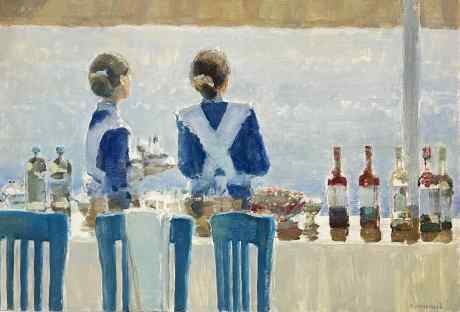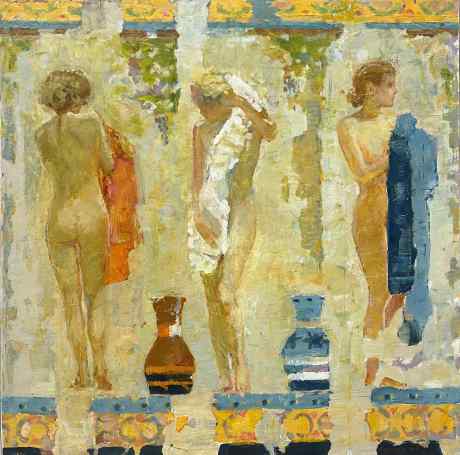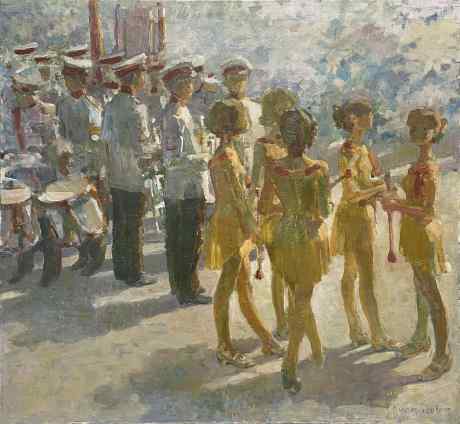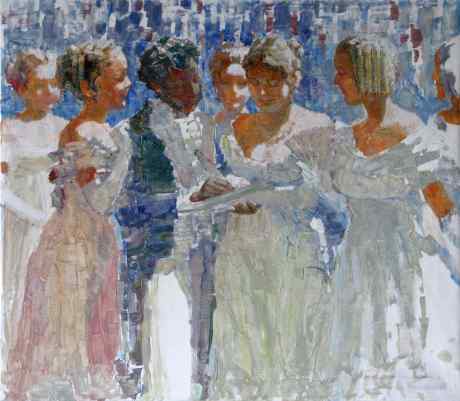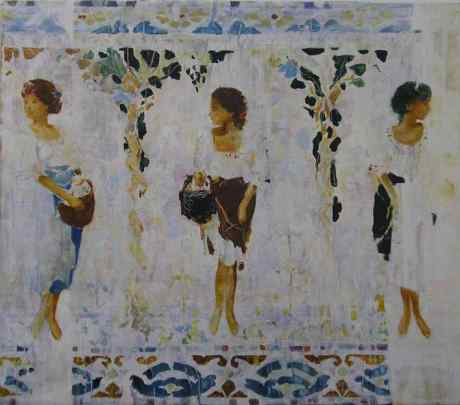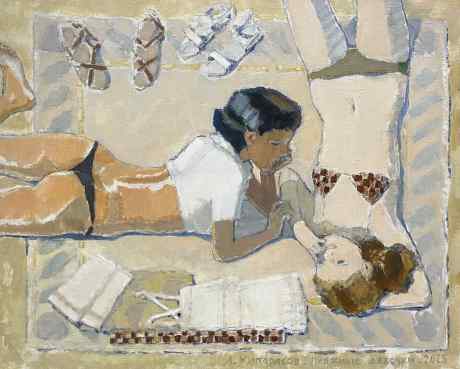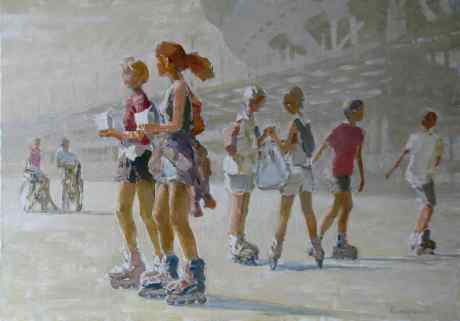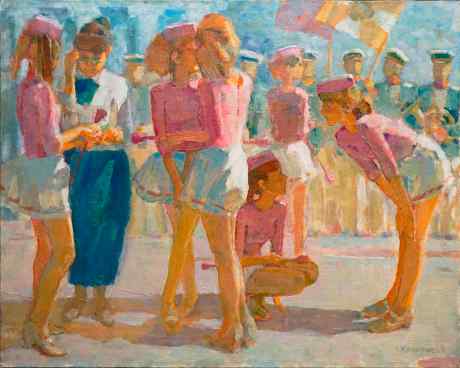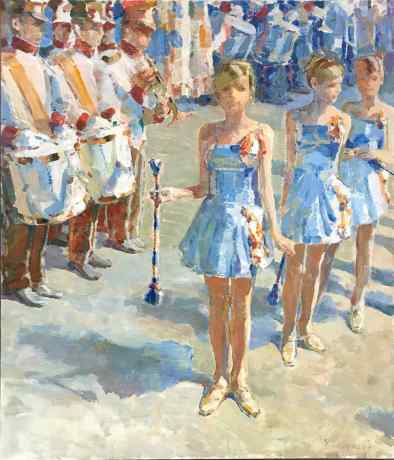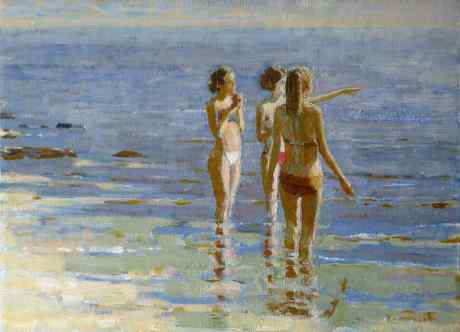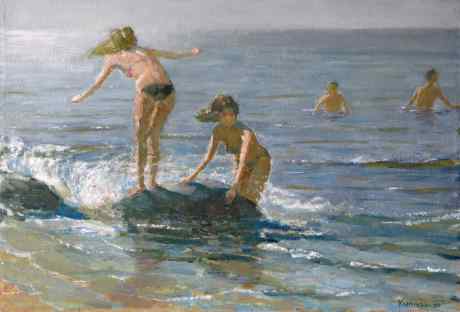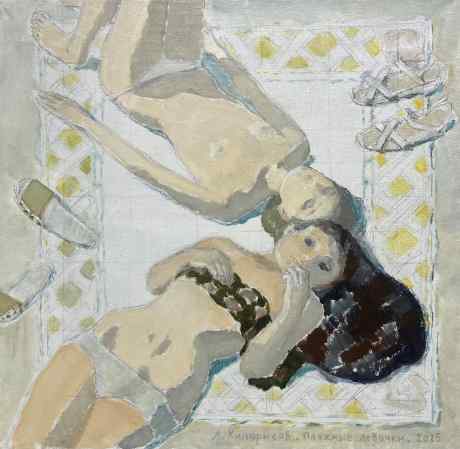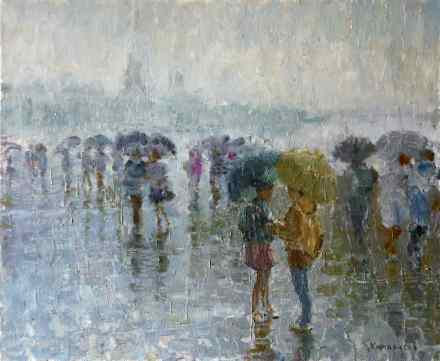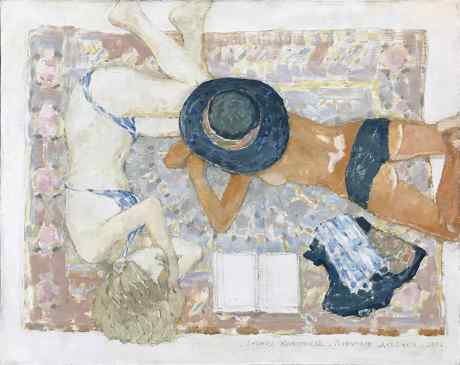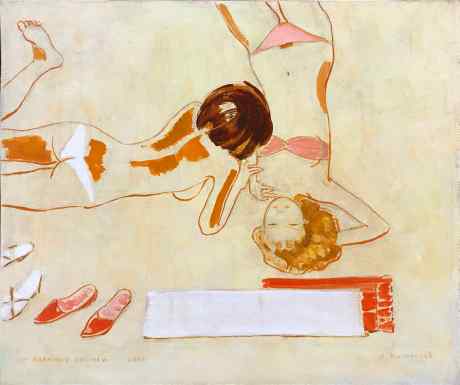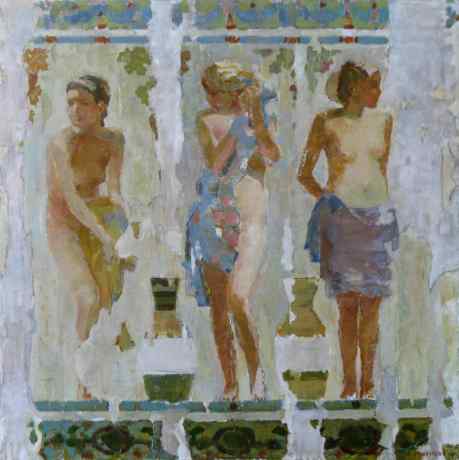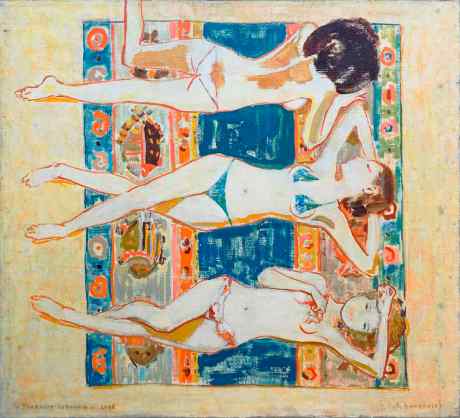- Art gallery
- →
- Artists
- →
- Leonid Kiparisov
About the artist
Painter, member of the Union of Artists of Russia. Born in 1964 (Novosibirsk).
Education: Leningrad State Pedagogical Institute named after A.I. Herzen.
The works are in the GMI St. Petersburg; State Museum of the Political History of Russia (St. Petersburg); State Museum of Printing (St. Petersburg) and in private collections.
Personal exhibitions:
1994 - Gallery Friesenstrasse, 38 (Cologne, Germany);
1996 - "Portrait" - the exhibition ground "Nevsky 20" (St. Petersburg);
2005 - "I, blondes and brunettes" - art cafe "Stray Dog" (St. Petersburg);
2006 - Petersburg Rains - art-cafe “Stray Dog” (St. Petersburg);
2007 - "Tea Party" - art-cafe "Stray Dog" (St. Petersburg).
Education: Leningrad State Pedagogical Institute named after A.I. Herzen.
The works are in the GMI St. Petersburg; State Museum of the Political History of Russia (St. Petersburg); State Museum of Printing (St. Petersburg) and in private collections.
Personal exhibitions:
1994 - Gallery Friesenstrasse, 38 (Cologne, Germany);
1996 - "Portrait" - the exhibition ground "Nevsky 20" (St. Petersburg);
2005 - "I, blondes and brunettes" - art cafe "Stray Dog" (St. Petersburg);
2006 - Petersburg Rains - art-cafe “Stray Dog” (St. Petersburg);
2007 - "Tea Party" - art-cafe "Stray Dog" (St. Petersburg).
Art critic's comment
The work of Leonid Kiparisov is distinguished by an elegant and light pictorial manner. Most often, the artist likes to depict the St. Petersburg rains and seeks to capture youth in all its manifestations on his canvases, generalizing figures to silhouettes in the rays of the “low sun”.
"... Girls who accidentally fell into my sketches, and then into the paintings, probably have now grown up, but across the bay, and I see this from year to year, their younger followers continue to roam. Some part of their life each person spends on the beach, where he is attracted by geography, the separation of the two main elements - water and land; and that particular pacification that arises from the awareness of the insuperability of the water space, "says Leonid Kiparisov.
The artist began a series of rainy Petersburg almost thirty years ago. Over the years, several dozen works have been created that show the city from a seemingly familiar, but still unexpected side. Petersburg Kiparisova magical and even mystical, because he draws it, covered with drops of water.
The city is seen as detached, as if the artist were observing through the glass covered with rain. Rain should not be perceived as a physical phenomenon, but rather as a decorative way of expressing the urban environment.
The architecture of St. Petersburg in the rain loses its severity and the city landscape ceases to be divided into separate buildings, facades, roofs, balustrades and mezzanines - all this is free, with a metropolitan scale flows into each other. The city, remaining majestic and monumental, at the same time, acquires a shaky mystery and uncertainty. The artist hints at us, in order to see this, it is enough to focus our attention not on the material component of the rain - wet feet or water behind the collar, but on its aesthetic side - for example, on the lines formed by the roofs of Petersburg houses, downpipes and legs of passing girls .
The secret to the success of Leonid’s work is simple, the presence of verticals, spiers or towers, which in St. Petersburg can be easily found on almost every street. People in paintings, rather, play an additional role, but they are always present or guessed.
The most important task of fine art is to convey spiritual values to the viewer, and this can be done only with the help of talent, knowledge and skill, which Leonid Kiparisov fully possesses, creating his works to the delight of the viewer.
L. Kiparisov is no less interested in the rare theme in contemporary art “Girls in Uniforms”. But one should not think that this topic continues the Soviet tradition and implies somewhere there, in the background, grandiose construction, socialist competition or the construction of the future. Kiparisov’s girls are valuable and good on their own. They, in fact, are what makes cafes, shops or salons of airliners truly beautiful. These special clothes - dresses, skirts, aprons, jackets - are part of the holiday that waitresses, stewardesses, and nurses give us. The artist interprets a different perception of the “uniform”, demonstrating with particular warmth his love for these creatures, for their appeal to us, for their desire to take care of us, for the graceful alignment of their movements, which is undoubtedly a great art. If you look for examples of addressing this topic in painting, then traditions go back to Degas and Toulouse-Lautrec, who were also worried about the graceful efficiency of the laundresses and dancers. One way or another, this topic is close to anyone, it is eternal and beautiful.
"... Girls who accidentally fell into my sketches, and then into the paintings, probably have now grown up, but across the bay, and I see this from year to year, their younger followers continue to roam. Some part of their life each person spends on the beach, where he is attracted by geography, the separation of the two main elements - water and land; and that particular pacification that arises from the awareness of the insuperability of the water space, "says Leonid Kiparisov.
The artist began a series of rainy Petersburg almost thirty years ago. Over the years, several dozen works have been created that show the city from a seemingly familiar, but still unexpected side. Petersburg Kiparisova magical and even mystical, because he draws it, covered with drops of water.
The city is seen as detached, as if the artist were observing through the glass covered with rain. Rain should not be perceived as a physical phenomenon, but rather as a decorative way of expressing the urban environment.
The architecture of St. Petersburg in the rain loses its severity and the city landscape ceases to be divided into separate buildings, facades, roofs, balustrades and mezzanines - all this is free, with a metropolitan scale flows into each other. The city, remaining majestic and monumental, at the same time, acquires a shaky mystery and uncertainty. The artist hints at us, in order to see this, it is enough to focus our attention not on the material component of the rain - wet feet or water behind the collar, but on its aesthetic side - for example, on the lines formed by the roofs of Petersburg houses, downpipes and legs of passing girls .
The secret to the success of Leonid’s work is simple, the presence of verticals, spiers or towers, which in St. Petersburg can be easily found on almost every street. People in paintings, rather, play an additional role, but they are always present or guessed.
The most important task of fine art is to convey spiritual values to the viewer, and this can be done only with the help of talent, knowledge and skill, which Leonid Kiparisov fully possesses, creating his works to the delight of the viewer.
L. Kiparisov is no less interested in the rare theme in contemporary art “Girls in Uniforms”. But one should not think that this topic continues the Soviet tradition and implies somewhere there, in the background, grandiose construction, socialist competition or the construction of the future. Kiparisov’s girls are valuable and good on their own. They, in fact, are what makes cafes, shops or salons of airliners truly beautiful. These special clothes - dresses, skirts, aprons, jackets - are part of the holiday that waitresses, stewardesses, and nurses give us. The artist interprets a different perception of the “uniform”, demonstrating with particular warmth his love for these creatures, for their appeal to us, for their desire to take care of us, for the graceful alignment of their movements, which is undoubtedly a great art. If you look for examples of addressing this topic in painting, then traditions go back to Degas and Toulouse-Lautrec, who were also worried about the graceful efficiency of the laundresses and dancers. One way or another, this topic is close to anyone, it is eternal and beautiful.

